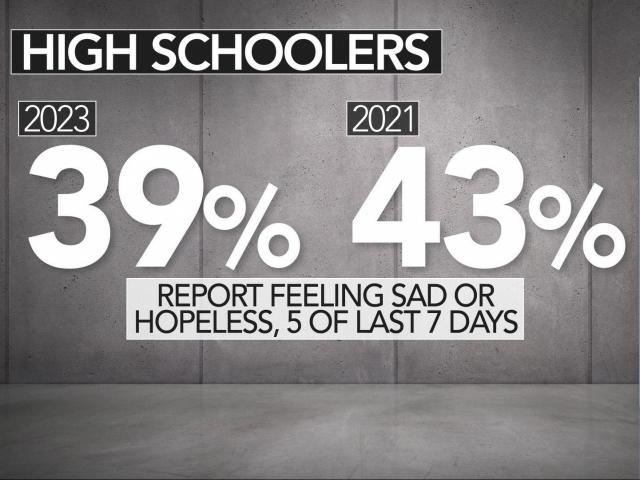The mental health of North Carolina teens is improving.
After nearly a decade of high school and middle school students reporting feelings of sadness and hopelessness on the CDC’s semi-annual Youth Risk Behavior Survey, both measures dropped: Fewer respondents in the 2023 survey were feeling those emotions.
In the previous survey, conducted in 2021, 43% of high school students and 35% of middle school students said they felt sad or hopeless. In 2023, 39% of high school students and 32% of middle school students said the same.
During the COVID-19 pandemic, a combination of lockdowns, remote learning and health fears has caused children’s mental health to reach an all-time low.
The percentage of high school students who had seriously considered suicide also decreased from 22% in 2021 to 18% in 2023.
Experts like Tiffany Gladney of the nonprofit NC Child say this is just a start.
“We’re happy about the improvements,” she said. “If even one less child has thoughts of suicide, that’s a win. But there’s still so much more to do to prevent any child from reaching crisis.”
There’s no single reason why teen mental health has improved, but Les Spell, state coordinator for the Youth Risk Behavior Survey, said extra resources added to schools in recent years have helped.
“We’ve been fortunate to have had a lot of federal funding over the last few years to provide more school counselors, more school psychologists, more social workers, and you have to believe that those things add up and make a big difference,” he said.
Spell said physical activity can also boost mental health.
In 2023, 42% of high school students reported being physically active for at least 60 minutes five or more days a week. In 2021, only 34% of teens reported being physically active.
Your browser does not support HTML5 video.


